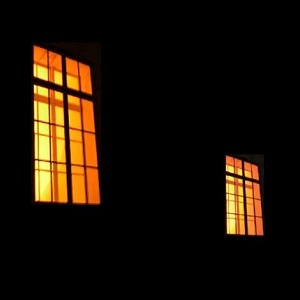Jürg Frey/Radu Malfatti, "II"
 One way to approach Jürg Frey and Radu Malfatti’s II is to concentrate on how they shape their music. The numerous small silences that dot the first disc are conspicuous. So is the album’s low volume and the sharp, maybe surprising, beauty with which Frey plays his clarinet and Malfatti his trombone, but form takes precedence over these. Form and the way sounds are formed. Much of what happens on these two discs is the product of the tension between silence and sound, the difference between expression and phenomenon, and the manner in which sounds beget forms all on their own. By subduing material and structure, Frey and Malfatti knock down the walls that sometimes bind music to a fixed path. What lies outside is a sparse and weightless field where music seemingly organizes—and destroys—itself.
One way to approach Jürg Frey and Radu Malfatti’s II is to concentrate on how they shape their music. The numerous small silences that dot the first disc are conspicuous. So is the album’s low volume and the sharp, maybe surprising, beauty with which Frey plays his clarinet and Malfatti his trombone, but form takes precedence over these. Form and the way sounds are formed. Much of what happens on these two discs is the product of the tension between silence and sound, the difference between expression and phenomenon, and the manner in which sounds beget forms all on their own. By subduing material and structure, Frey and Malfatti knock down the walls that sometimes bind music to a fixed path. What lies outside is a sparse and weightless field where music seemingly organizes—and destroys—itself.
II, as the title implies, splits the work of Jürg Frey and Radu Malfatti over two discs. The first, a Malfatti-credited piece titled "shoguu," cuts a strong impression. Long, vibrating tones, stark harmonics, and frequent silences comprise nearly all of its material, though certain tones are so smooth and consistent they sometimes sound computer-generated. The likelihood that computers were used is probably pretty low, but the semblance of that analog hum adds a mysterious and blurry component to the performance.
The noise of a depressed valve, a few unexpected squeaks, and the odd bodily clank of brass or hardwood turns up as well, but for the better part of the five sections of"shoguu," a subdued, balloon-like spaciousness holds court. The combination of clarinet and trombone produces delicate music, as restrained as it is gorgeous. Without a discernible structure—and without the usual musical tools, like rhythms, chord changes, and other sonic continuities—the duo’s wavering tones come off as autonomous little events, cobweb-like and fleeting. Some of the melodies are so tenuous they seem almost illusory, like particles of dust that might disappear should the sunlight hit them a different way. Malfatti even hollows his trombone’s lower register out, making it feather-like and buoyant, it’s swelling whole tones like vents of warm rising air.
"Shoguu" is a Japanese term that means both "dealing with" and "treatment" in English. In the context of Jürg and Radu’s playing it takes on an additional sense, something like "dealing with silence" or "the treatment of sound," or maybe even "dealing with the other guy in the room." Because the structure of the piece is invisible, the tones themselves become the focus, and because only two instruments are played the entire time, a special significance develops around the way they interact, both with each other and with silence. As they carve different shapes out of the air and take stock of the extent of the distances between them, it becomes easier and easier to understand what Frey meant when, in 1998, he wrote, "Sounds always occur as a formation or a shaping. They come into being by crossing a border which divides them from all others. At this border, everything formed becomes particular." It’s as if the music is being sculpted one object (or phrase) at a time.
On disc two, Frey’s "instruments, field recordings, counterpoints" utilizes precisely those ingredients to craft a larger, different sort of sculpture. Field recordings of distant highways or spinning hard drives shimmer flirtatiously on the horizon, distorted and time-stretched to varying degrees. They act as a fixed reference for everything else, like a distant object in the night sky. Disconnected melodies pass under them and anonymous percussion rattles in between, booming and echoing down unseen canyon walls. A few edits shift the action suddenly, making it clear that these sounds have been arranged, but the music still achieves the illusion of total presence. It’s like Frey and Malfatti are holding a camera on one scene the entire time. The composition doesn’t move from left to right, it diverts attention or changes focus from instruments to an anonymous hum to the sound of birds and back again. Combinations rise and fall, disappear and reappear, and the scene slowly becomes more (or less) complex. Still, there’s no sense of composition. Either the sounds just happened that way by accident or they were always there and Frey and Malfatti cut them out from the silence. Cut too much and the performers begin to show through the work. Cut too little and it might not seem as if anything is happening at all.
That kind of controlled expression, which depends on the artist doing less rather than more, makes II difficult to pin down. At first blush it looks simple and compact, the product of reduction and compression. After a while it takes on the opposite appearance. The sounds grow and overflow with miniscule details and the music opens up in a way that suggests boundlessness. The sensation of constant shaping and the numerous pregnant silences push the edges of the music further and further into the distance, where the need to control and to speak relaxes and the ear wins a little freedom. To some degree, where it wanders depends on the performers. But after they’ve finished selecting and arranging their parts, much depends on the listener.
samples:



